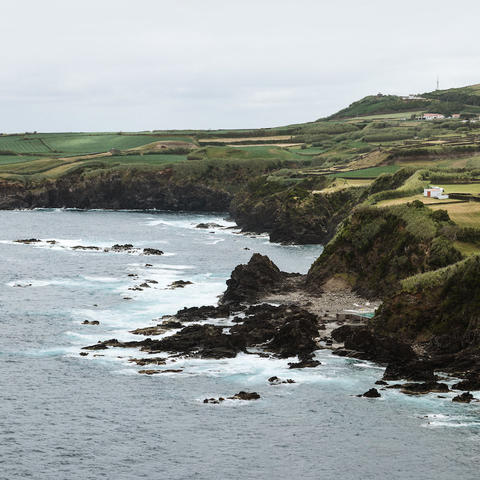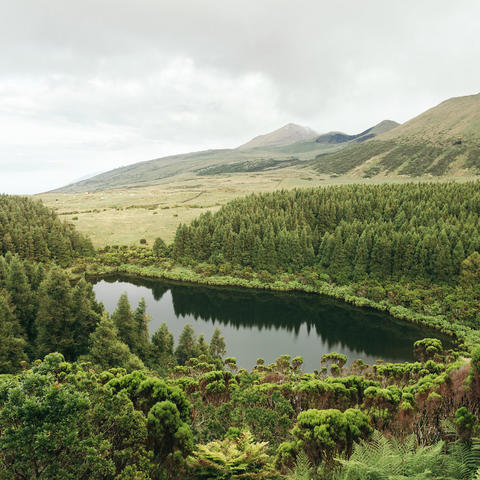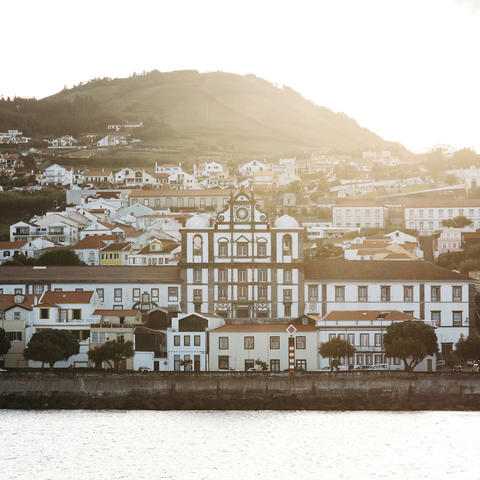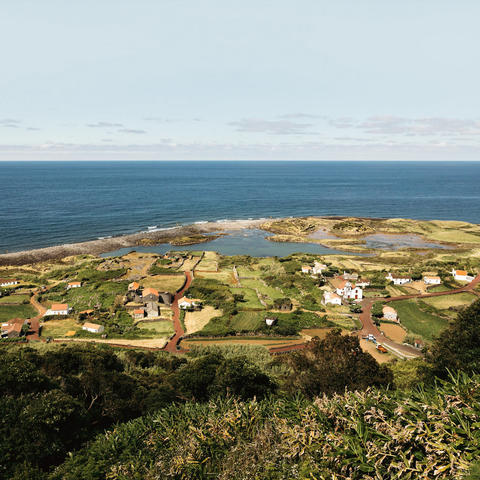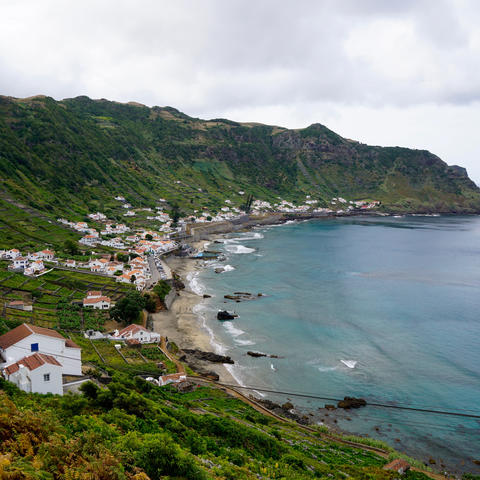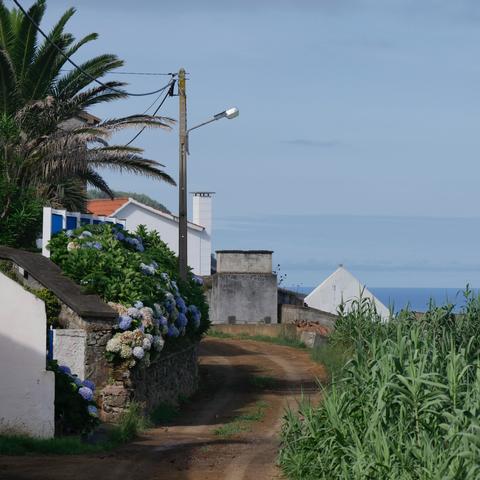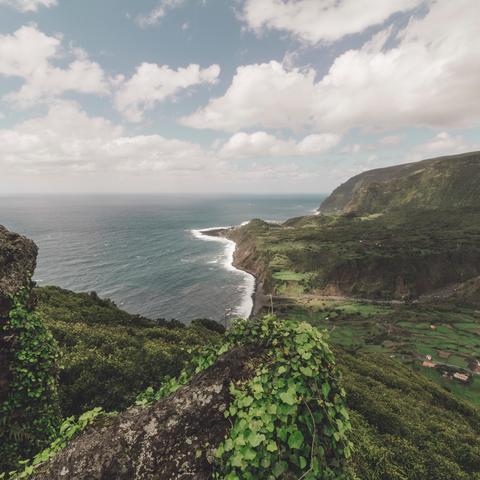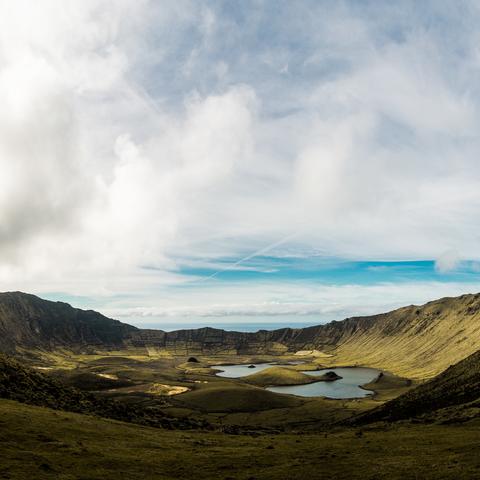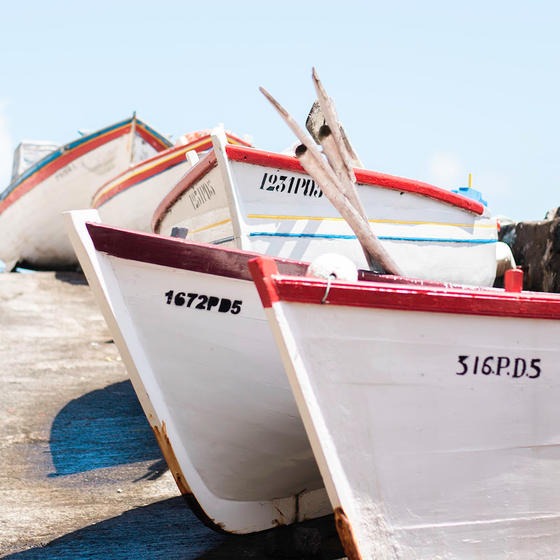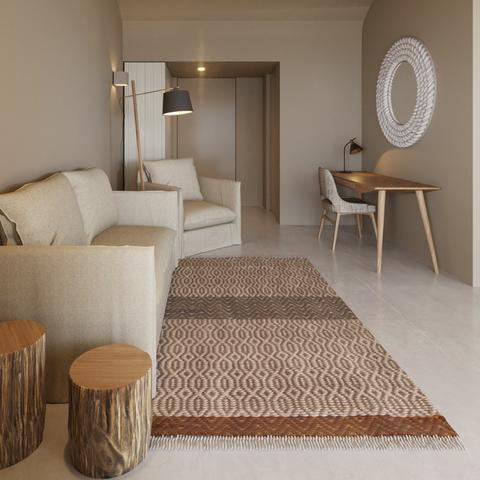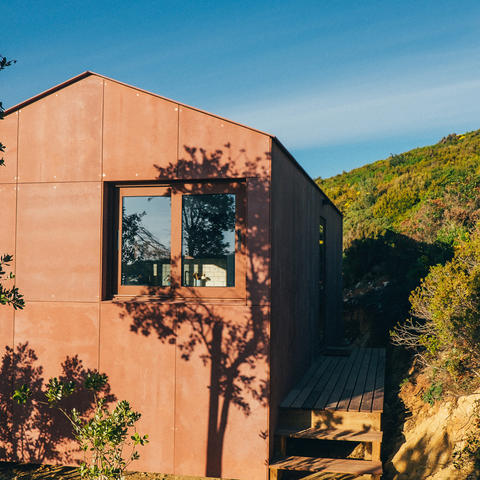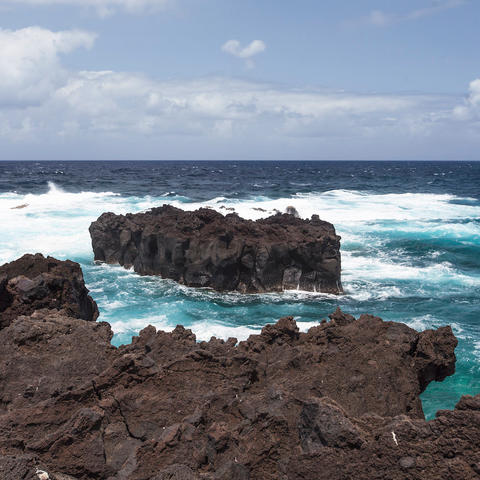
Sāo Miguel
The archipelago’s headline island – as well as the most
accessible – Sāo Miguel is rippled with peaks, between which lie so
many tropical jungles, rolling plains, epic waterfalls and hot
springs that it’s earned the moniker of “the green island”. There’s
a palpable energy here; waves crash against the shore while inland
the capital, Ponta Delgada, is a city that sings with things to do,
see and eat.
TO STAY
On the island’s northern coast, Pico do Refúgio is a heady cocktail of nature,
art and contemporary design. It stands out as a hub of creativity
at the heart of the slow-living locales of Rabo de Peixe and
Ribeira Grande. It’s minimalist lofts and apartments set in former
tea-plantation buildings are prime for those seeking a boutique,
design-forward stay.
Larger party? There are several houses that can be rented out in
their entirety. Try Villa Várzea, a bright, off-the-beaten-path
mansion a 10-minute drive from the Sete Cidades lagoon and the
thermal waters of Ferraria; or the Casa dos Barcos on the shores of the Lagoa das
Furnas.
For a stay that strikes the balance between sustainability and
luxury, try Solar Branco Eco Estate, a mere 10-minute drive from
Ponta Delgada. Powered by solar panels (this is the sunny Azores,
after all), the century-old Portuguese
mansion-turned-boutique-hotel ticks the boxes for producing zero
food waste and banning single-use plastics – so you can polish your
eco halo as you avail of its Azorean gin-tasting sessions, guided
forest bathing, tile-painting classes and such. This is a place to
switch off your phone and inhale a few lungfuls of the
citrus-tinged ocean breeze.
TO EAT AND DRINK
This is a place fuelled by deliciously cheap petiscos
(Portuguese tapas) and comparably good plonk. In Ponta Delgada, try
A
Tasca – the island’s most popular restaurant – for
just-off-the-boat tuna steak, smoked black pudding and pineapple
cake; Taberna Açor for cured meats; or the no-fuss Mané
Cigano where plates are piled high with grilled-to-perfection
sardines. For a more gourmet spin on Azorean cuisine, try Tasquinha Vieira behind the Teatro Micaelense.
Seafood aside, beef, beef and more beef is the raison d’être of
many of the Azores’ menus, thanks to the flocks of cows that graze
happily across the islands’ wild pastures – grass-fed is the norm
here. You’ll find this echoed in the menu at Associação
Agrícola de São Miguel, where there are nine varieties of beef
to choose from – we recommend opting for the signature Bife à
Associação steak. Alternatively, the garlicky Bife à Alcides from
Alcides
restaurant is brilliant too. While vegetarian and vegan options are
few, Rotas da Ilha Verde is a hippy hotspot for plant-based
fare – the aubergine cannelloni is very good.
A 40-minute drive east along the coast – factor in time for
stop-offs in shoreside boltholes such as São Roque, Lagoa and
Caloura – you’ll reach the town of Furnas, famed for “cozido das
furnas”, a traditional stew baked in the earth from the heat of the
volcano. Side step any restaurants when you see tour buses;
O Miroma and Vale das Furnas are local
favourites.
TO DO
The twin lakes of Lagoa das Sete Cidades – one blue and one
green – lie together in the crater of a dormant volcano; hike the
12km circuit around the lakes, with several routes down to the
water’s edge. Legend has it that the lakes were formed by the tears
of a shepherd and a princess who were forbidden to love each
other.
On a clear day, you can see the entire island from the top of
the Serra da Água and the striking Lagoa do Fogo (Lake of Fire).
The viewpoints of Ponta da Madrugada, Boca do Inferno and Vista do
Rei provide equally impressive views. Bathe in the clay-brown
thermal pool at Parque Terra Nostra and don’t miss the ruins of
Monte Palace Hotel, the Aqueduct, the Caldeira Velha, the Ponta do
Canário, the Ponta da Ferraria and the Portas da Cidade.

